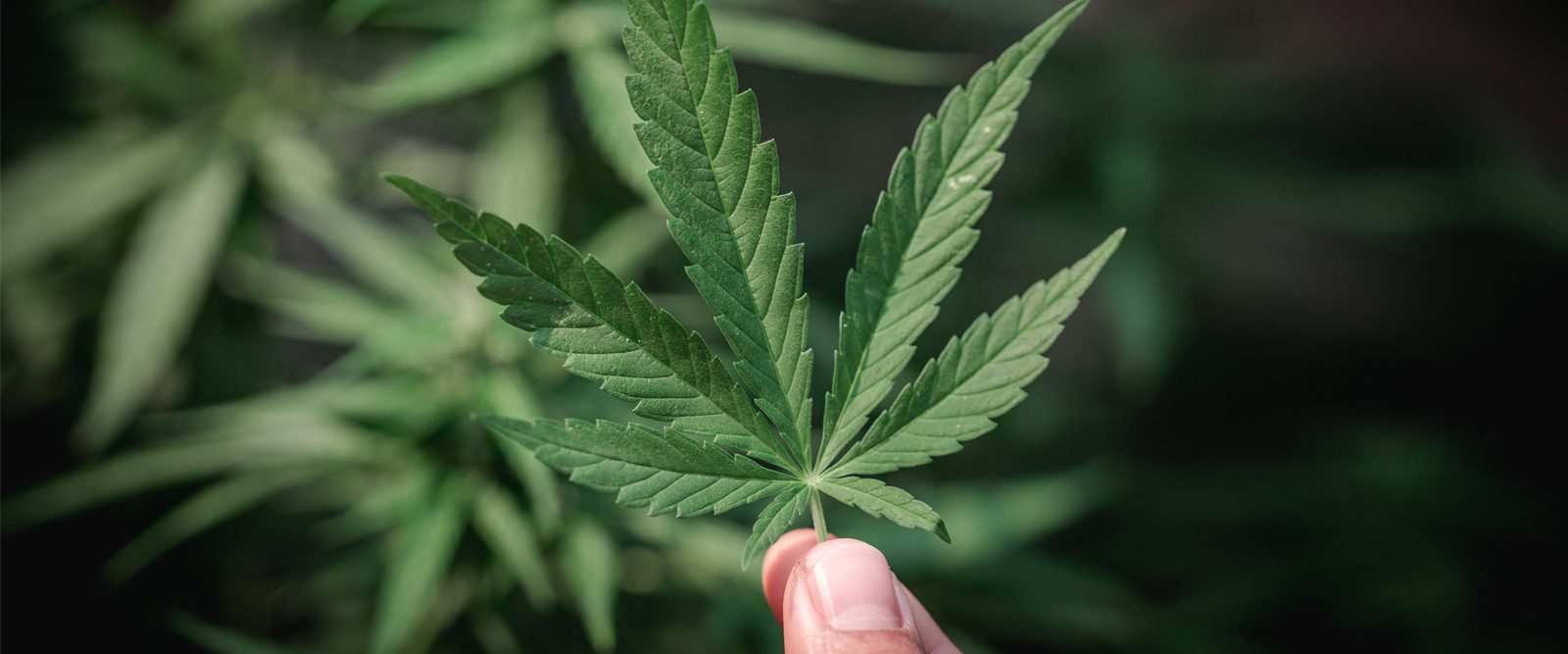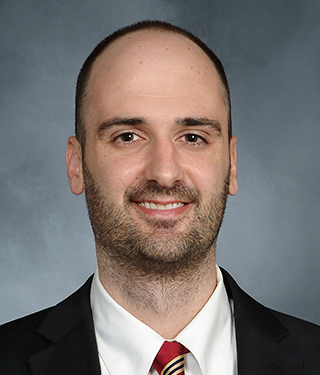Understanding Cannabis
With more people than ever using marijuana, experts explain how cannabis is prescribed medically and some potential risks of its recreational use.

The use of marijuana, also known as cannabis, among adults has reached historic levels in the United States. New research funded by the National Institutes of Health found that 44% of people 19 to 30 years old reported using marijuana in 2022; for those aged 35 to 50, 28% reported using it, more than double that of a decade ago.
The increase comes as nearly half the states across the country have legalized recreational marijuana. In New York, where adult recreational use of marijuana recently became legal, licensed, legal dispensaries have opened along with a proliferation of stores that sell cannabis illegally without a state license. Authorities believe that more than 1,400 of these unlicensed and unregulated shops now exist in New York City.
With more access to marijuana and historic levels of use, people may wonder about the risks of cannabis, as well as how it is used in medical settings.
To better understand medical marijuana, Health Matters spoke with Dr. Alina Boltunova, a pain management specialist with NewYork-Presbyterian/Weill Cornell Medical Center and an assistant professor of clinical anesthesiology at Weill Cornell Medicine, who explained which conditions cannabis is prescribed for. And to break down the risks of recreational use, Dr. Jonathan Avery, director of addiction psychiatry at NewYork-Presbyterian/Weill Cornell Medical Center and vice chair of addiction psychiatry at Weill Cornell Medicine, explains signs and dangers of cannabis use disorder.

Dr. Alina Boltunova
What is cannabis?
Dr. Boltunova: Cannabis and marijuana are generally used interchangeably, but they don’t mean exactly the same thing, according to the National Center for Complementary and Integrative Health. Cannabis refers to all products derived from the cannabis plant, while marijuana refers to the parts of the plant that contain tetrahydrocannabinol (THC), the psychoactive substance in the cannabis plant that causes its mind-altering affects. The cannabis plant also contains the compound cannabidiol (CBD), which is a non-psychoactive chemical.
How is marijuana used medicinally?
Dr. Boltunova: New York’s medical marijuana program was created for people with certain debilitating conditions that can lead to chronic pain or nausea, including cancer, HIV, epilepsy, or neuropathy. It is also used in the treatment of multiple sclerosis, glaucoma, and to help with chemotherapy-induced nausea and vomiting.
In terms of pain, there is some evidence that marijuana may be particularly helpful for nerve pain. This is likely because the cannabis interacts with the cannabinoid receptors in our brain and immune system, and through that mechanism is potentially alleviating pain.
When does marijuana become a consideration for prescription?
Dr. Boltunova: There are a few instances. For example, a patient might have legitimate concerns about using prescribed opioids to treat pain. Patients who use opioids chronically are at risk for developing opioid tolerance, opioid dependence, and something called opioid-induced hyperalgesia, which is an increased sensitivity to pain in a person who is treated with opioids. If a patient has exhausted all the conventional treatments for chronic pain, or they have concerns about using opioids, medical marijuana would become a consideration.
Is medical marijuana safer than opioids?
Dr. Boltunova: It might not be as addictive, but the use of cannabis for pain is not risk free. There are side effects like drowsiness, changes in mood or cognition, and it could lead to cannabis use disorder. Providers might be hesitant to recommend medical marijuana to any patient who has a history of substance use disorders. It can also put you at risk for dizziness and sedation, which can put elderly patients at a greater risk for falls, which can be catastrophic events.
If someone chooses to use cannabis recreationally, what should they keep in mind?
Dr. Avery: Limit the frequency you use and stick with products that are lower in THC. The concentration of THC content can predict how intoxicated you get. Edibles are absorbed more slowly so it can be longer before you feel the physical effects of the marijuana and people will end up taking too much because they think it is not working. Edibles can also fall into the hands of other people, including children. A recent study found cannabis-involved emergency department visits among youth increased during the pandemic, so it’s important to keep cannabis products locked away. And only purchase THC products from licensed dispensaries, where the products are regulated. Unregulated products can contain harmful contaminants like pesticides, heavy metals, and microbes.
"If you have family members who have struggled with addiction, if you have a personal history with addiction to other substances, there are greater odds that you will struggle to moderate your marijuana usage."— Dr. Jonathan Avery
Can someone overdose on marijuana?
Dr. Avery: If you ingest too much through smoking, vaping or edibles, you can get physically sick and there may be short-term psychological consequences like paranoia. Marijuana these days is far more potent than it used to be. It’s marijuana on drugs, which can lead to some intense states of psychosis. In those cases, a person may need to visit an emergency room, but for the most part if someone ends up more intoxicated than they expected or wanted, it can mostly be managed with time and reassurance that the person is in a safe space.
What is cannabis use disorder?
Dr. Avery: Cannabis use disorder is when you’re using marijuana in a way that gets in the way of your functioning. This means cannabis becomes the answer to every question during the day — how it helps you unwind, socialize, and sleep. While it might seem like cannabis helps with managing sleep, anxiety or depression, overuse can exacerbate anxiety and depression, worsen your cognitive abilities, and make it harder to sleep. Sustained and frequent use can lead to a cannabis use disorder, particularly among teens. By some reports, cannabis is less addictive than alcohol, where approximately one in four people who drink casually will end up with an alcohol use disorder. For marijuana, approximately one in 10 who use will end up with a use disorder, but the odds increase if you start using at a young age with a developing brain.

Dr. Jonathan Avery
What are the signs of cannabis use disorder?
Dr. Avery: The most common signs would be increases in tolerance to cannabis, cravings for it, and an uncontrolled escalation of use. These can be easy to miss, though, because marijuana can be used in undetectable ways, such as vaping, edibles and oils. With these methods, there’s no smell like with cigarettes or alcohol, and with chronic use it can be hard to distinguish if someone is intoxicated or not, especially if they are used to functioning while intoxicated. It can be subtle, but when someone starts using all the time there are a few signs to look out for.
You may notice a loved one who is not socializing the same way. They may be withdrawing from events and choosing to use marijuana over other hobbies or activities that used to bring them rewards, because the reward system in their brain is being hijacked. You may also notice a type of cannabis withdrawal, where the person could be more irritable, they could have trouble sleeping, or have changes in appetite.
Are some people more at risk for a cannabis use disorder?
Dr. Avery: Yes. If you have family members who have struggled with addiction, if you have a personal history with addiction to other substances, there are greater odds that you will struggle to moderate your marijuana usage. You see this with other substances. Someone will try to drink moderately if they’ve had other addictions, like to opioids, and they end up getting addicted to the thing that seemed safer.
For those with co-occurring mental health conditions, especially depressive and anxiety disorders, withdrawal states can make whatever you started using marijuana to treat much worse. In other words, people who use marijuana to self-medicate instead of using treatments like prescription medicine and therapy to treat their underlying mental health issues. If someone is having trouble with withdrawal, we usually try to focus on treating the underlying psychiatric issues that are being exacerbated by the person’s dependency on marijuana.
Are teens at risk of using earlier now that marijuana is more accessible?
Dr. Avery: We don’t have data to show if there’s an uptick in use among adolescents, but one hope is that legalization for adults will encourage conversations in homes and schools about the risks of these products. What we worry most about among adolescents, be it with nicotine, alcohol, or marijuana, is we want the developing brain to avoid these substances as much as possible. Brains don’t typically develop completely until around the age of 25, and we know scaring kids won’t deter using these substances. Studies also have shown that the risk of developing a cannabis use disorder is higher among young people who are daily or weekly users. Approximately one in 10 who use will end up with a use disorder, but the odds increase if you start using at a young age with a developing brain.
What we need are honest conversations about risk so when people do experiment, it’s something we can talk about openly and intervene early if needed so someone doesn’t end up with a cannabis use disorder.

